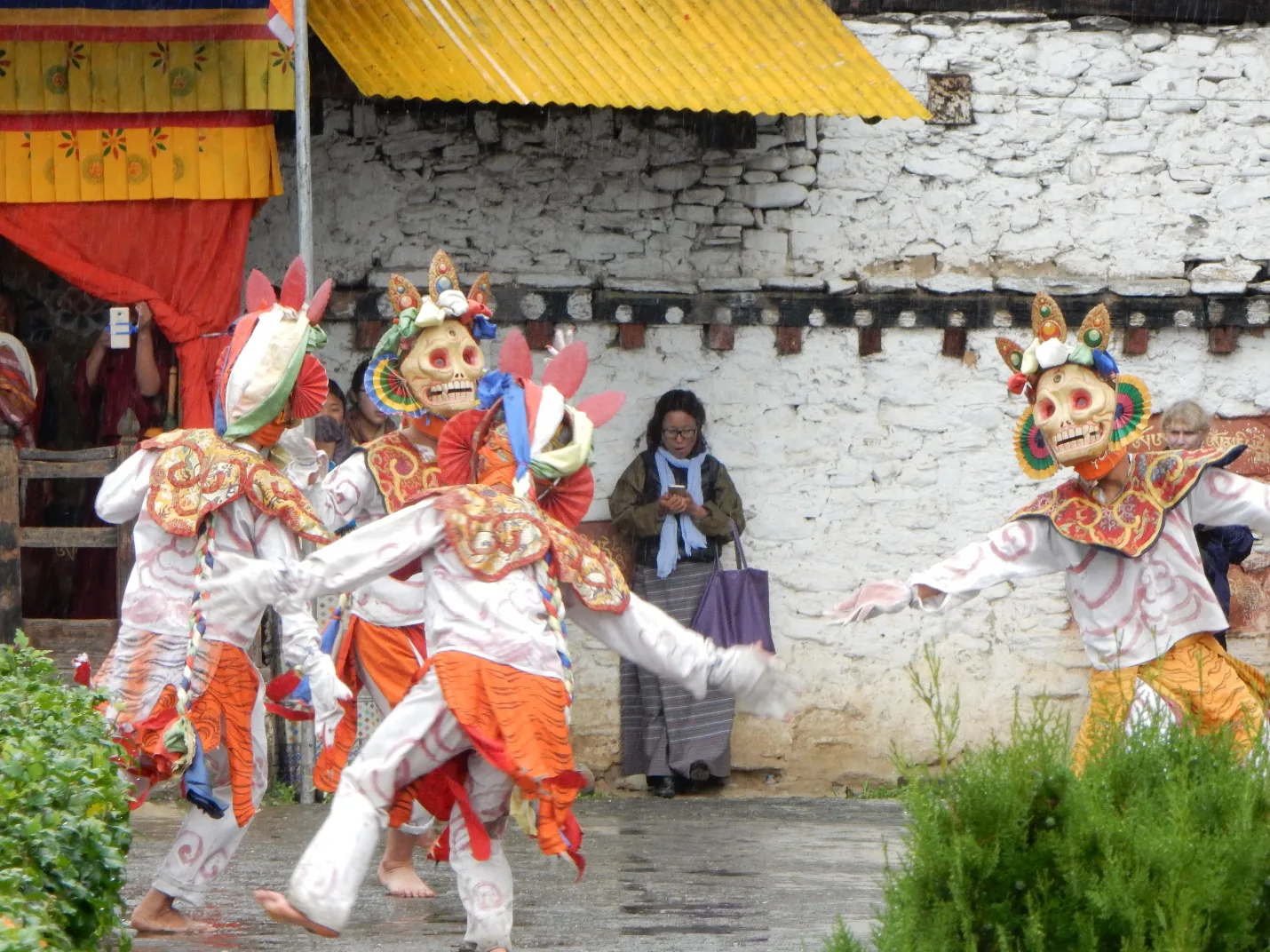Tsechuation Report
Buddhism is everywhere. It was an integral part in the unification of Bhutan, and remains prevalent in the day-to-day life of most Bhutanese citizens. Often in the small streams common in Bhutan there will be a water-powered prayer wheel. Prayer flags are scattered around the high passes and lowlands alike, and monks casually roam the streets. One of the most theatrical examples comes in the form of festivals, locally known as Tsechus.
We had the fortune of attending Tamzhing monastery for their celebration, during which monks and civilians alike would adorn ornate masks and perform religious dances. Each dance had a unique significance, some being to celebrate the Lord of the Cremation Grounds (the Bhutanese do not bury their dead, only cremate), while others were to please the local deity, or celebrate the legend of Pema Lingpa, the historic treasure revealer.
Toward the end of the festivities, there is the blessing of the wrathful form of Pema Lingpa in which many dancers bring out a throne on which the masked Pema Lingpa sits and the crowd form a line to be blessed by the monks. After people receive their blessings they are then hit on the back with a (somewhat heavy) sack as a symbol for violently ridding you of the evil spirits that may follow you through your life. Additionally, we were blessed as we passed a statue of the second Buddha, Guru Rinpoche that was originally carved by the famed treasure revealer.
While the Tsechu was a unique reason to visit a monastery, it is not an uncommon occurrence. There are some 10 monasteries and temples in Choekhar Valley where our campus is located, each with its own unique traits and reasons to visit. Shudrak monastery, perched on a cliff high above the valley floor is a pilgrimage location for many Buddhists and recognizes the cave in which Guru Rinpoche meditated to gather his strength to subdue the demon present in the valley below. These legends shape the landscape, and compose the foundations of this beautiful country.
The Buddhist principles of compassion and selflessness are ever present in the community around us; in the monks and nuns we get the pleasure to speak with, the Bhutanese members of the staff, even just the people we encounter on the street. These experiences resonate with all of us, and I can see that the more we learn about this community, the more we each take these values to heart and ourselves become more compassionate, more kind, and more selfless.

Dance of the Lord of Cremation Grounds (Durdag) at Tamzhing Monastery, Bunthang

The Black Hat Dance at Tamzhing Monastery, Bumthang

Tango Monastery, Thimpu
Related Posts

Camila Rojas: Alumni Spotlight⭐

